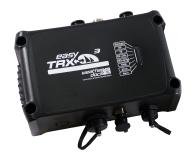Mittelstandspresse
05.06.2019
AIS Class B - SOTDMA vs. CSTDMA - face the difference
AIS Class B transceiver are now available with the SOTDMA channel access method known from commercial shipping. But where are the differences and does SOTDMA make sense for pleasure boaters?
Nürnberg, 05.06.2019 (PresseBox) - Within this article we want to uncover SOTDMA and want to explain what the background of SOTDMA is.
In 2018 a new standard for AIS Class B transceiver was launched by IMO. Since then it is allowed that AIS Class B devices use the same transmission channel access system as commercial shipping does: SOTDMA instead of the former CSTDMA
SOTDMA is the acronym for “Self Organized Time Division Multiple Access” and CSTDMA stands for “Carrier Sense Time Division Multiple Access”.
In General
To work out the differences, we need to know how AIS is working generally. AIS means “Automatic Identification System” and was developed for continuous exchanging of position data between vessels. AIS is using the UTC timestamp with accuracy of a millionth of a second to ensure that every vessel has got the same time basement. Within the AIS system, one minute is a frame and is divided into 2250 time slots. Every position report is send within such a time slot. This guarantees that every single transmission will be seen and not be overwritten.
By using the former CSTDMA channel access system, AIS Class B transceiver first have to listen to the AIS traffic to find a free slot, before transmitting the position report. If there is no free slot, the CSTDMA unit has to wait for the next transmission interval.
With the SOTDMA channel access system, time slots for the next transmissions will be reserved in advance to make sure that the position report will be send out.
Benefit for pleasure boaters
One big benefit of the AIS Class B SOTDMA technology is the 5 Watt radiated transmission power the units are broadcasting with. This increases the vicinity where your AIS data will be received and your position will be displayed on AIS capable chart plotters.
By reserving future time slots, the next big benefit is that the Class B SOTDMA transmissions has got higher priority within the AIS system than Class B CSTDMA.
Weatherdock is ready for the new AIS Class B SOTDMA Generation
The new AIS Class B transceiver unit easyTRX3 of Weatherdock is using the SOTDMA time slot access system, is broadcasting with 5 Watt radiated power and, it has got a lot of additional features inside which are more than helpful for pleasure boaters. With this link you can get familiar with the easyTRX3 transceiver get detailed information about the unit.
Ansprechpartner
Michael Knipp
+49 (911) 376638-32
Zuständigkeitsbereich: Leitung
Alfred Kotouczek-Zeise
+49 (911) 376638-30
Zuständigkeitsbereich: CEO
Über Weatherdock AG:
Weatherdock Cooperation, Germany (Founded 2003)
• World leader in AIS based, commercial vessels approved, personal locator beacons in
the VHF band
• Founder of the year 2008
• Among the best 100 midsize companies in Germany (12.000 applicants for that award!)
Datei-Anlagen:

(4 MB)
1059710.attachment
AIS Class B SOTDMA easyTRX3

(86 kB)
1059711.attachment
AIS Class B SOTDMA easyTRX3 topview

(2 MB)
1059713.attachment
Leaflet AIS Class B SOTDMA easyTRX3
- Mehr Infos zu dieser Meldung unter www.pressebox.de
- zurück zur Übersicht
















